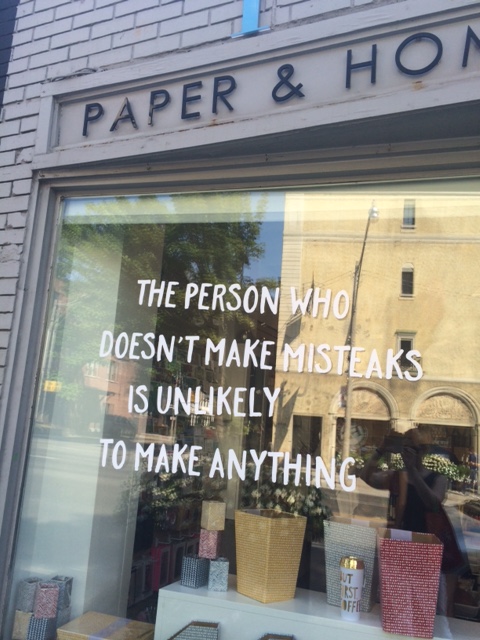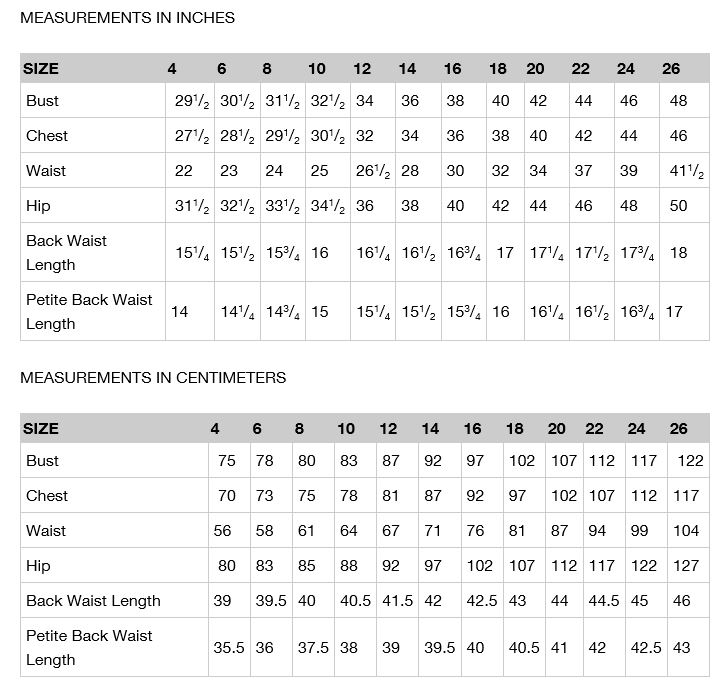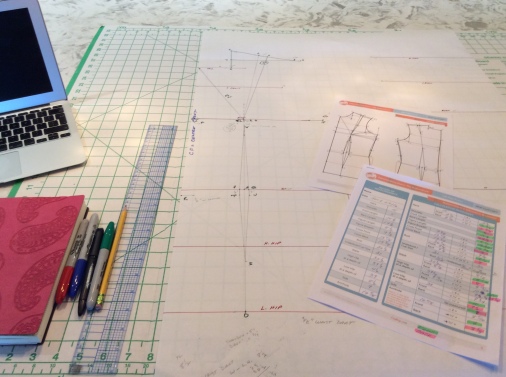Sometimes I think I’m the only person on the planet who remembers wearing (and sewing with) crimplene. Yes, that’s how you spell crimplene. Trademarked in the 1950’s (long before I started wearing the stuff), this was a fabric that really came into its own in the late 1960’s, remained a mainstay of fashion and sewing for a few years, then disappeared into the mists of sewing history.
According to most online sources, crimplene was the trade name of both the yarn and the fabric made from it. Polyester in origin, this was a go-to fabric for all kinds of projects and will go down in my own fashion sewing history as the first knit I ever sewed with. It occasionally appeared as a woven fabric, but most of it was a textured double knit that we used for shift dresses, pant suits (yes, matching tunic tops and pants which, BTW might make a great come-back for the over-50 set with the right silhouette in my view), men’s leisure suits (please god no more leisure-suit come-backs), and even shirtwaists. I loved it.

Crimplene had all the characteristics that we were looking for at the time:
- It was forgiving (unlike many of the woven fabrics of the day).
- It was totally unwrinkleable (likely not a real word, but you know what I mean).
- It was machine washable, dryable and unshrinkable (which accounts for why I never learned to prepare fabric before sewing since crimplene needed no prep).
- It came in every colour and texture you could imagine (and couldn’t fade even if you left it in the sun for years).
- It was indestructible (and crimplene clothing is probably still stacked in our land-fills to this day).
- And it never frayed (so those of us on the fast fashion sewing track which we have finally recovered from never had to finish a seam allowance *shudder*).
So, when I returned to sewing in the twenty-first century I wanted to learn the techniques for modern knits, of course. I decided to enroll in another Craftsy course (actually it was the first one I ever stumbled upon) on sewing with knits, took out the walking foot that came with my new digital sewing machine and figured out how to install it on the machine. I have to admit I had never seen such a contraption before – never even heard of it. But once I learned how to use that sucker, I cannot live without it.
As I made my way through the course, I found myself two lots of knit fabric whose weight I really liked and proceeded to make some modern knit tops. What I noticed, although it didn’t really strike me at the time I bought the fabric, was the extent to which it resembled – you guessed it – crimplene. Fashioned from cotton blends in this century, both lengths of fabric I chose were eerily like the crimplene I had known and loved in the last century.
See that texture? (Front on left; back on right) Not crimplene, but twenty-first century cotton knit!
Sometimes I wonder if our sewing DNA is a kind of blueprint for what we’ll evolve to as we age – but perhaps like a fine wine, we do get better with age. I’d like to think I’m a bit more discerning and that this discernment has evolved along with the increasing size of my pocket book that was thin, indeed, back in my undergrad years at university.
Anyway, as I examine closely the fabric of the cross-over top I made during that Craftsy course, I can see definite remnants of my former penchant for crimplene. Now I’m longing to have a length of that old stuff to see if it really is as terrible and unbreathable as I think it was.
This new century has taught me that knits should probably not be indestructible, nor should they be designed only for fast sewing. They should take beautiful seam finishes, and should feel divine when worn. Feeling and looking divine: that’s what I’m after!
[If you need more about crimplene, here is a great post on a Sixties Style Blog that you’ll just love – and lots of photos! A Brief History of Crimplene http://stylesixties.blogspot.ca/2013/04/a-brief-history-of-crimplene.html]



 Thankfully for anyone reading my blog regularly or even only occasionally, I rarely rant. Today, however, I need a bit of rant space. Today I’m thinking about fashion (couture sewing is related to fashion, n’est ce pas?) with a particular emphasis on what passes as “fashion journalism.” In another life, I actually write other things – like books. Couple this with the fact that I’ve been a fashion magazine junkie for more years than most of you have been on the planet, I appreciate a well-written fashion-related article. There have always been those magazines that regularly demonstrate a high level of what can really be defined as fashion journalism (Vogue comes to mind), but there are so many others I have blindly stumbled upon lately that I have to vent a bit.
Thankfully for anyone reading my blog regularly or even only occasionally, I rarely rant. Today, however, I need a bit of rant space. Today I’m thinking about fashion (couture sewing is related to fashion, n’est ce pas?) with a particular emphasis on what passes as “fashion journalism.” In another life, I actually write other things – like books. Couple this with the fact that I’ve been a fashion magazine junkie for more years than most of you have been on the planet, I appreciate a well-written fashion-related article. There have always been those magazines that regularly demonstrate a high level of what can really be defined as fashion journalism (Vogue comes to mind), but there are so many others I have blindly stumbled upon lately that I have to vent a bit. A few years ago I read an article reporting on a study whose results suggested that we are now experiencing a veritable epidemic of body image and consequent eating disorders among older women. The seriousness of it seemed a bit worrying, but the underlying message that it was shocking was a bit beyond the pale.
A few years ago I read an article reporting on a study whose results suggested that we are now experiencing a veritable epidemic of body image and consequent eating disorders among older women. The seriousness of it seemed a bit worrying, but the underlying message that it was shocking was a bit beyond the pale. So, the first thing I did when approval finally came was insert a separating zipper in the back. My husband, my measurement partner, wished I had done it earlier. This way as I move forward with the stuffing, I can open it more easily. Then I had to make Gloria junior smaller to match the smallest part of my own torso – my under-bust. That’s why she now needs to be stuffed up again with the bits in the right place.
So, the first thing I did when approval finally came was insert a separating zipper in the back. My husband, my measurement partner, wished I had done it earlier. This way as I move forward with the stuffing, I can open it more easily. Then I had to make Gloria junior smaller to match the smallest part of my own torso – my under-bust. That’s why she now needs to be stuffed up again with the bits in the right place.



 Why, oh why does my dressmaker’s mannequin not resemble me? The short answer is that I’m too cheap to buy a custom dummy. So I’m left with Gloria Junior (her name) whose under-bust will never be as small as mine unless her waist becomes waspish, and her shoulders will never resemble mine unless they are raised at least an inch. And that’s just the beginning. So, why do I need her, anyway? I sewed my own clothes – and clothes for my sisters and my mother – for years without the aid of a mannequin. So, why now?
Why, oh why does my dressmaker’s mannequin not resemble me? The short answer is that I’m too cheap to buy a custom dummy. So I’m left with Gloria Junior (her name) whose under-bust will never be as small as mine unless her waist becomes waspish, and her shoulders will never resemble mine unless they are raised at least an inch. And that’s just the beginning. So, why do I need her, anyway? I sewed my own clothes – and clothes for my sisters and my mother – for years without the aid of a mannequin. So, why now?



 It never fails: tune into a discussion of garment pattern sizes among newbie sewers and be prepared for the lamenting to begin. Yes, you, the experienced garment producer, think to yourself, a size 8 pattern is most assuredly not going to fit you if you wear a size 8 in ready-to-wear. In fact, I understand the depths of your indignance. If you wear a size 8 in most ready-to-wear, you probably wear a size 6 in Not Your Daughter’s Jeans (yes, I’m old enough to truly appreciate them). And, to add insult to injury, you probably wear a size 0 – yes, zero – in Chicos (of course their sizing is a thing onto itself). But here’s the thing – you only wear a size 8 in North America anyway. Rest assured, you’re never going to be able to zip up that size 8 dress off the rack at Harrod’s or, god forbid that you even try, at Galleries LaFayette in Paris. That’s because a size 8 in North America ready-to wear equates to a size 12 in the UK, and generally a European size 42, just maybe a 40 (not a 38 as you might wish). So, where does that leave you in pattern sizing? Probably a size 14.
It never fails: tune into a discussion of garment pattern sizes among newbie sewers and be prepared for the lamenting to begin. Yes, you, the experienced garment producer, think to yourself, a size 8 pattern is most assuredly not going to fit you if you wear a size 8 in ready-to-wear. In fact, I understand the depths of your indignance. If you wear a size 8 in most ready-to-wear, you probably wear a size 6 in Not Your Daughter’s Jeans (yes, I’m old enough to truly appreciate them). And, to add insult to injury, you probably wear a size 0 – yes, zero – in Chicos (of course their sizing is a thing onto itself). But here’s the thing – you only wear a size 8 in North America anyway. Rest assured, you’re never going to be able to zip up that size 8 dress off the rack at Harrod’s or, god forbid that you even try, at Galleries LaFayette in Paris. That’s because a size 8 in North America ready-to wear equates to a size 12 in the UK, and generally a European size 42, just maybe a 40 (not a 38 as you might wish). So, where does that leave you in pattern sizing? Probably a size 14.





You must be logged in to post a comment.